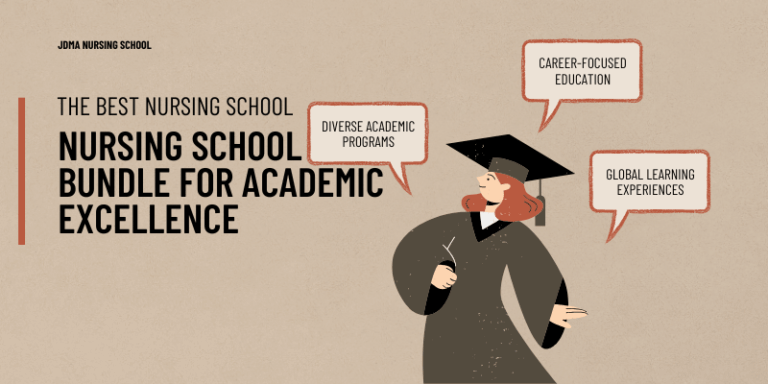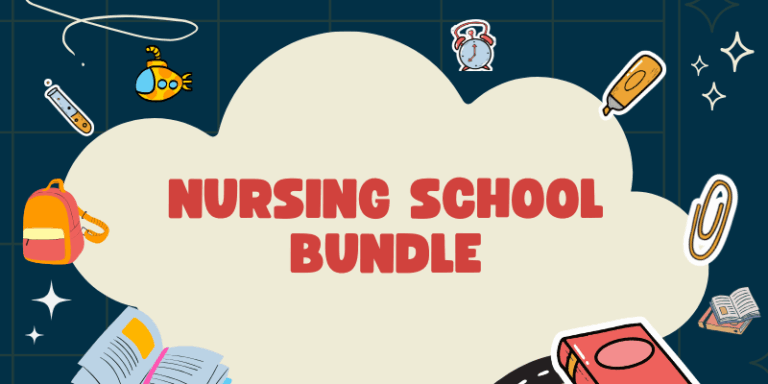
Best Nursing School Bundle for Academic Excellence
Find out which best nursing school bundle ranks best for knowledge retention and test prep. Choose the right bundle for success.
Anatomy & Physiology are cornerstone subjects in healthcare education often considered among the most demanding. These courses unlock the secrets of how the body functions and how its intricate systems work together. Excelling in an anatomy and physiology course requires dedication and the right tools. Dr. Jane Parker, a professor of physiology states,
“Understanding anatomy & physiology is the gateway to mastering clinical care” .
Whether you are training as a nurse, doctor or allied health professional leveraging high quality resources like textbooks, visual aids and study guides makes learning more efficient and engaging. This solid foundation ensures success in both academics and patient care.
An understanding of Anatomy & Physiology is fundamental for anyone pursuing a healthcare career. Anatomy focuses on the bodies structure while physiology examines how it functions. Together they form the basis for diagnosing illnesses, planning treatments and delivering exceptional patient care. Dr. Emily Greene, a renowned physiology professor emphasizes,
“Anatomy & physiology are not just subjects they are the language of healthcare. Mastering them unlocks the door to clinical excellence” .
Enrolling in a comprehensive anatomy and physiology course equips students with the skills to understand complex medical scenarios bridging the gap between knowledge and effective practice.
Having the right textbook is essential for excelling in any anatomy and physiology course. Here are the top recommendations for 2024:
“Human Anatomy & Physiology” by Elaine N. Marieb and Katja Hoehn
This textbook is a favorite among students in medical and nursing schools. It provides in depth explanations and includes clinical examples that connect theory to real world scenarios. Dr. Amy Richards, a nursing professor states,
“This book bridges the gap between foundational knowledge and practical application, making it invaluable for healthcare students“.
“Essentials of Anatomy & Physiology” by Valerie C. Scanlon and Tina Sanders
This textbook is perfect for students who prefer concise yet comprehensive coverage. It simplifies complex topics without compromising depth making it a great resource for beginners.
“Atlas of Human Anatomy” by Frank H. Netter
For visual learners this atlas is unmatched. Its detailed illustrations and labeled diagrams make it easier to understand the human bodies structures. Many healthcare professionals consider it an indispensable reference.
Investing in these resources ensures a thorough understanding of anatomy and physiology laying a strong foundation for success in the healthcare field.
Technology has transformed the way students approach their course. Interactive apps and online tools make learning engaging and accessible offering dynamic ways to understand complex concepts.
Complete Anatomy is a cutting edge 3D anatomy app that provides a detailed view of the human body. Users can explore layer by layer gaining a clearer understanding of structures like muscles, bones and organs. Dr. Sarah Lane, a physiology educator notes,
“This app is invaluable for students who need to visualize how different systems interact in real time”.
Khan Academy offers free concise video lessons on essential topics. Each video breaks down concepts into digestible sections making it ideal for self paced learners. According to a survey by the National Health Education Foundation 85% of students using Khan Academy reported improved retention rates.
This app combines 3D models with animations emphasizing the connection between structure and function. It is especially useful for linking textbook knowledge to clinical applications.
By incorporating these tools into their studies students can master Anatomy & Physiology more effectively combining traditional learning with modern technology.
Flashcards and study guides are time tested methods for mastering complex topics in an course. These tools make learning interactive and enhance the retention of detailed information.
Kaplan’s flashcards are designed for portability and precision covering essential anatomical terms and physiological processes. Their compact size allows students to review anytime, anywhere.
“Kaplan’s flashcards are perfect for reinforcing key concepts during quick study breaks,”
says Dr. Lisa Moore, an anatomy professor.
This online platform provides customizable flashcards and quizzes created by both students and educators. Users can focus on specific topics or create their own study sets making it a versatile tool for all learners. According to a study published in Advances in Physiology Education students using digital flashcards like Quizlet retained 30% more material compared to traditional methods.
By incorporating flashcards and study guides into their routines students can efficiently memorize terms and strengthen their grasp of Anatomy & Physiology.
Videos make the complexities of an course more accessible especially for visual and auditory learners. High quality video resources simplify intricate concepts making them easier to understand and remember.
CrashCourse offers a free engaging video series that breaks down complex topics into digestible lessons. With dynamic visuals and simple explanations these videos are a favorite among students.
“CrashCourse turns dense material into a fun and approachable learning experience,” says education expert Dr. Rachel Carter.
Known for in depth explanations, Dr. Najeebs video library covers both anatomy and physiology with exceptional clarity. His lectures are detailed yet beginner friendly ideal for students seeking a deeper understanding of body systems.
Incorporating these video resources into your study plan ensures a comprehensive grasp of Anatomy & Physiology while catering to diverse learning styles.
Joining a study group enhances your experience in an course by fostering collaboration and deeper understanding. Sharing resources and discussing topics with peers helps clarify doubts and strengthens knowledge.
Teaching others is one of the best ways to learn. Explaining concepts to peers reinforces your grasp of Anatomy & Physiology ensuring a more thorough understanding.
Research published in Nurse Education Today found that students in peer learning groups scored 25% higher on exams than those who studied alone. This highlights the effectiveness of collaborative learning in mastering challenging subjects like anatomy and physiology.
Embrace peer learning to maximize your success!
Regular practice with questions and mock exams is essential for mastering an anatomy and physiology course. These tools help identify knowledge gaps and reinforce key concepts.
“Lippincott Q&A Review for Anatomy and Physiology” offers a wide range of practice questions tailored to challenge and improve understanding. Similarly end of chapter quizzes in textbooks like Marieb’s Human Anatomy & Physiology provide structured opportunities to test comprehension and application of material.
Studies indicate that active retrieval through practice exams enhances long term memory and application skills. Testing keeps you prepared and confident for real exams.
Make practice an integral part of your study routine to excel!
Grasping the interconnectedness of anatomy and physiology is key. For example, understanding the structure of alveoli in the lungs helps explain how gas exchange occurs. This deeper comprehension allows students to apply their knowledge in clinical scenarios rather than just memorizing facts.
Mnemonics can turn complex terms and concepts into memorable phrases. For instance, “Sally Likes Tasting Pretty Candy” can help remember the bones of the wrist: Scaphoid, Lunate, Triquetrum, Pisiform, Capitate, Hamate. These memory aids make learning less daunting and more enjoyable.
Regular review is crucial for retaining information in anatomy and physiology. Set aside time each week to revisit older topics reinforcing knowledge while integrating new information. This practice solidifies understanding and prepares students for exams by reducing last minute cramming.
Regular review and active learning strategies are essential for mastering this challenging subject.
Mastering anatomy and physiology requires a combination of high quality resources effective study techniques and consistent effort. Whether it is diving into a textbook like Marieb’s or exploring interactive tools like Complete Anatomy students have more options than ever to make learning engaging and effective. As Dr. Greene emphasizes:
“The resources you choose can make the difference between struggling and excelling in your anatomy and physiology course.“
With dedication and the right tools students can not only ace their exams but also build a strong foundation for their healthcare careers.

Find out which best nursing school bundle ranks best for knowledge retention and test prep. Choose the right bundle for success.

Complete nursing school workbook bundle! Includes flashcards for nursing students, cheat sheets, dosage calculation practice, and more.

Get the instant-download Printable Nursing School Bundle—packed with study guides, cheat sheets, NCLEX prep, and digital planners.
By subscribing to our newsletter you agree to our Terms and Conditions and Privacy Policy